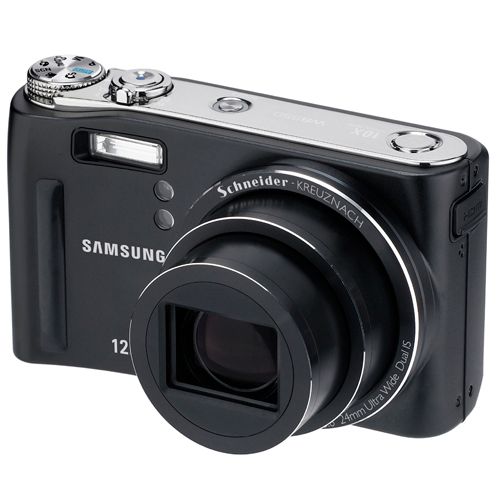Getting a broad focal range from a non-interchangeable lens camera needn’t necessitate purchase of a bridge model that won’t fit in your pocket. Witness Samsung cramming a 10x optical zoom (24-240mm equivalent) into its latest WB550 compact, the "W" indicating a wide-angle lens at 24mm and the "B" that aforementioned big zoom.
Our quick take
In terms of image performance, it’s the colours delivered by the Samsung WB550 even when left on its default settings that jump off the review screen, being mostly warm and well saturated. On occasion this can almost make scenes resemble pages torn from a Japanese comic, though there’s no doubt that it lends punch to the blues and greens of landscapes and puts a healthy glow in the cheeks of human subjects.
It also ensures that would-be users have to do little, if any, in the way of post processing afterwards. Again, a beginner friendly feature, if the visibility of purple pixel fringing between areas of high contrast disappoints. At maximum wide angle there is some barrel distortion too – though not to a painful degree – while sharp results are achievable at extreme telephoto if there’s plenty of light available.
For those who demand a big zoom but want a relatively small form factor too, Samsung’s WB550 – along with the 10MP WB500, which otherwise boasts the same headline spec – suggests itself as a viable alternative to Panasonic’s pioneering TZ series of big zoom pocket cameras.

Samsung WB550 digital camera - 4.0 / 5
| FOR | AGAINST |
|---|---|
|
|
At a width of 36.5mm though, the 12.2 effective megapixel camera nevertheless feels chunky and reassuringly weighty gripped in the palm at 225g, bucking the trend for svelte fashion-conscious compacts.
Plastic of build with chrome detailing, around the back is a large 3-inch, 230k dot LCD screen in the absence of any optical viewfinder, with a nicely firm dial on the top plate providing a choice of eight shooting modes – including one for high definition 1280 x 720 pixel movie clips, with, unusually for a compact, an HDMI port built into the camera’s side. Also handily large are the shutter release button encircled by a rocker switch for operating the zoom.
The WB550 offers a broader range of light sensitivity settings than most point and shoots, starting out at ISO 80 and topping out at ISO 3200. While that sounds impressive, resolution drops to 3-megapixels at the higher setting to limit noise. And it appears to work, shots taken at ISO 3200 comparable to the results from rivals at ISO 1600. With little discernable shutter delay, it takes around 2 seconds for a full resolution JPEG to be written to memory – here in the form of either removable SD or SDHC card, or paltry 21MB internal capacity.
Found via the shooting mode dial set into the right hand edge of the top plate (mirrored by a "virtual" version onscreen) is Smart Auto, Samsung’s interpretation of the intelligent auto point-and-shoot functionality offered by Panasonic’s Lumix and Canon’s IXUS ranges. Select this and the camera will in theory recognise the intended subject and switch its internal settings accordingly, with 11 pre-optimised scenes to choose from. For example point the WB550 at a close object and it’ll jump to macro mode (focusing as near as 5cm), direct it at one further away and landscape mode will be chosen.
Also on-board for beginners are the now ubiquitous face detection, blink detection, smile mode – capturing an image when a grin is detected – plus Samsung's own beauty shot option, automatically retouching out spots and freckles.
For photo enthusiasts, there’s the ability to select program or manual settings – with the chance to change focus area, metering, single or high speed capture, ISO and white balance therein. Manual adds the ability to tweak shutter speed and aperture on screen via a "command lever" set into the top right-hand corner of the camera back. Being a narrow and uncomfortable lever, with seemingly enough surrounding space for it to have been made larger, it’s one of the few black marks against an otherwise pleasant to use, intuitive device.
To recap
Fans of photographer Martin Parr who like their images almost unnaturally colour rich will find the Samsung WB550 a deserving companion for the occasional snapshot, and one that will bring them closer to the action to boot
